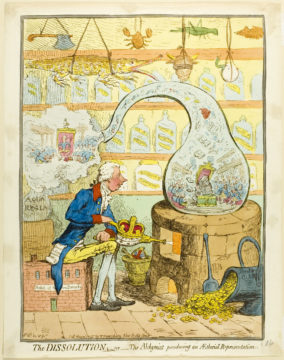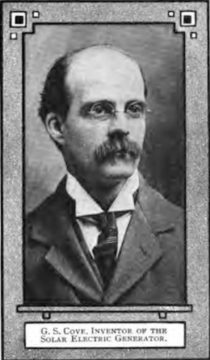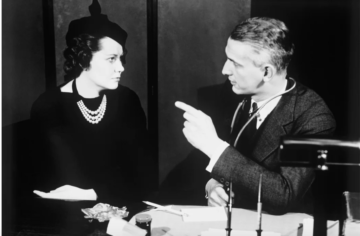by Martin Butler

Given the increasing ubiquity of technology in all our lives, it’s surely time to consider what may sound like an obvious, even stupid question but one that is actually vitally important: What is technology for?
At its simplest, technology can be understood as a tool which enables us to reach a particular end; a chimp using a stick to extract honey from a tree trunk, for example, a means to an end. That approach is crucial to our perception of the place of technology in the modern world. I visit a shop (means) to buy something (end). I get on a train (means) to arrive at a destination(end). To be able to engage in means-ends activity of any complexity is surely a sign of intelligence, showing purpose and imagination in that it seems necessary to imagine a state-of-affairs in the future that has not as yet come to pass, and of conceiving a way to achieving it. The end would be unattainable without the technology, just as the internet enables working from home in a way that would be impossible without it. On this model much technological innovation is about devising more efficient means of achieving particular ends, even though the ends were still achievable prior to the innovation. By ‘more efficient’ we mean meeting ends more quickly, doing it in a way that requires less human effort and often on an increased scale. The key innovations that were pivotal in the Industrial revolution were, for example, the machines that allowed spinning and weaving to take place on an unprecedented scale.
The main features of this model are that the means and the end are distinct, and the end is something we have identified as desirable. On these assumptions technology will always seem positive simply because it allows us to access something desirable that was previously unattainable, or, to access something desirable more efficiently than was previously the case. This model is taken as common sense in the modern world and it at least partly explains why technology is given pride of place within our culture.
But this is a misrepresentation of the place of technology in human life, principally because the relation between means and ends is not as simple as the above model suggests. Read more »




 Sughra Raza. Night Seagulls at Karachi Harbor, Dec 7, 2023.
Sughra Raza. Night Seagulls at Karachi Harbor, Dec 7, 2023. The philosopher Aristotle, who lived in the 4th century BC, wrote in The Nicomachean Ethics that you cannot become good without practice. Even the ideal utterly good person whose every action is carried out at the right time for the right reason, has gone through a long process of trial and error; their ultimate victory over bad tendencies, precipitous judgement and external obstacles is a victory achieved through blood, sweat and tears. Aristotle’s promise is that the effort that engages both body and mind– if carried through with constancy and a bit of luck – will some day be sublimated into a way of being which will become both effortless and wholly constitutive of the moral agent. True enough, this ideal remains somewhat shrouded in the mist of a far-away horizon, but the path is paved, however arid and mountainous it may be. With the help of guides and maps, models and teachers, it is up to us to commit to the daunting effort.
The philosopher Aristotle, who lived in the 4th century BC, wrote in The Nicomachean Ethics that you cannot become good without practice. Even the ideal utterly good person whose every action is carried out at the right time for the right reason, has gone through a long process of trial and error; their ultimate victory over bad tendencies, precipitous judgement and external obstacles is a victory achieved through blood, sweat and tears. Aristotle’s promise is that the effort that engages both body and mind– if carried through with constancy and a bit of luck – will some day be sublimated into a way of being which will become both effortless and wholly constitutive of the moral agent. True enough, this ideal remains somewhat shrouded in the mist of a far-away horizon, but the path is paved, however arid and mountainous it may be. With the help of guides and maps, models and teachers, it is up to us to commit to the daunting effort.






 The broken-down jalopy that was Hubert Humphrey’s campaign wheezed its way out of Chicago and headed…anywhere but there. The Convention was an utter disaster. The only “bump” in the polls was a shove backwards, and Humphrey seemed to have nothing with which to shove back. He had no coherent message on the biggest issue of the day—Vietnam. He was working for an absolutely impossible boss, LBJ, who demanded complete loyalty and delighted in humiliating him. His campaign was broke…it literally didn’t have enough money to pay for orders of Humphrey buttons.
The broken-down jalopy that was Hubert Humphrey’s campaign wheezed its way out of Chicago and headed…anywhere but there. The Convention was an utter disaster. The only “bump” in the polls was a shove backwards, and Humphrey seemed to have nothing with which to shove back. He had no coherent message on the biggest issue of the day—Vietnam. He was working for an absolutely impossible boss, LBJ, who demanded complete loyalty and delighted in humiliating him. His campaign was broke…it literally didn’t have enough money to pay for orders of Humphrey buttons. I teach at a large, public university in the mid-Atlantic region of the United States. For about a decade now, the upper administration has had a habit of sending “comforting” emails whenever there’s a major school shooting. Of course there are far too many school shootings in America to send a note for each one, so I suppose the administration tries to keep it “relevant,” for lack of a better word. These heartfelt missives arrive in my Inbox once or twice a year, typically after some lunatic shoots up a college campus. So far as I can tell, they go to everyone. To every faculty member, staff member, and student on campus. To 25,000 people or more.
I teach at a large, public university in the mid-Atlantic region of the United States. For about a decade now, the upper administration has had a habit of sending “comforting” emails whenever there’s a major school shooting. Of course there are far too many school shootings in America to send a note for each one, so I suppose the administration tries to keep it “relevant,” for lack of a better word. These heartfelt missives arrive in my Inbox once or twice a year, typically after some lunatic shoots up a college campus. So far as I can tell, they go to everyone. To every faculty member, staff member, and student on campus. To 25,000 people or more.

